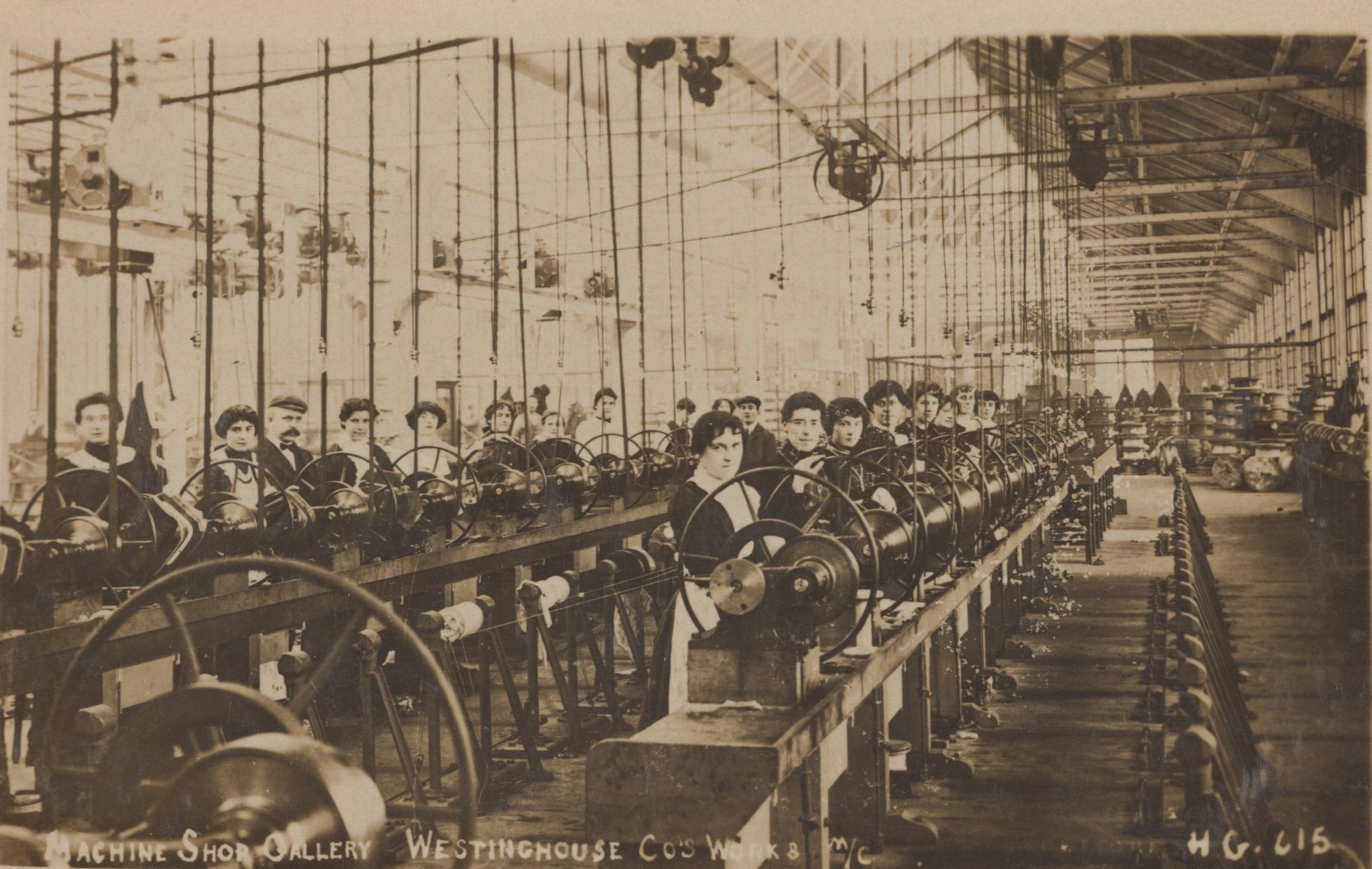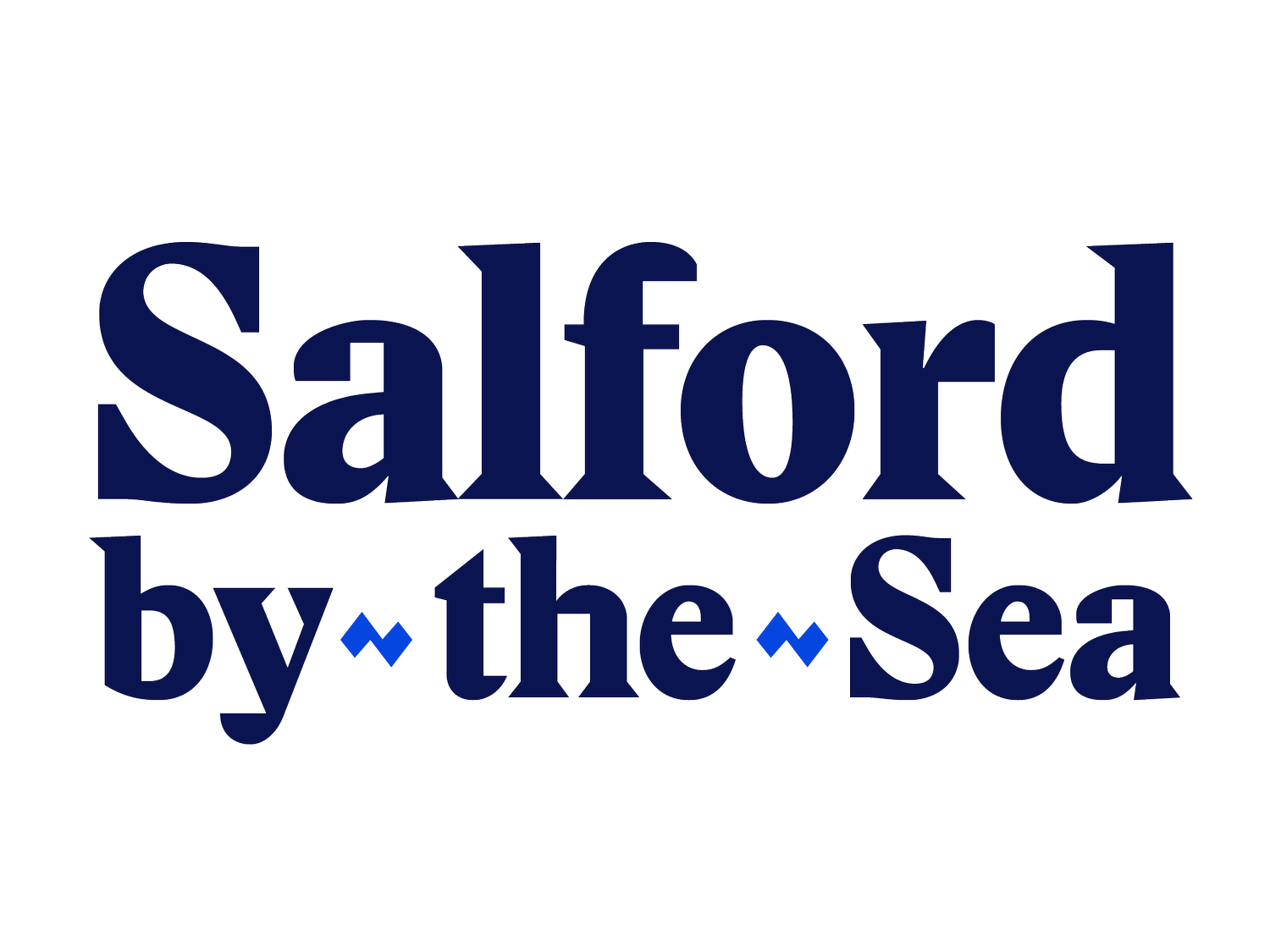4. Working Women
Industrial Life at Salford Docks
The 1900s saw a growth in employment opportunities for local Salfordians. But it was an era of change, Industrial Revolution and World Wars – and that radically changed the face of the workforce…

Photograph: Women machine workers at Trafford Park (credit Manchester Postcards).
It was a time that saw countless industrial, engineering and technological developments such as cars, planes, radios and computer systems.
At its peak, men and women found independence and provided skilled labour at both the docks and multiple factories at Trafford Park Industrial Estate.
The docks, and their transatlantic trading connections, created a place that could capitalise on both production and distribution opportunities into the 20th Century.
Photograph: The English & Continental Casting Co Ltd, Mode Wheel, Trafford Park (credit Manchester Postcards).
During the First and Second World Wars thousands of men left to serve in the armed forces.
This meant that women were recruited and trained in skilled jobs traditionally reserved for men. They also helped to maintain the production of vital defence equipment, including instruments for use in radio and radar and component parts for Lancaster Bombers.
Photograph: Women scraping runs and shovelling starch into trucks at the glucose factory of Nicholls, Nagel & Co. Ltd., Trafford Park, Manchester, September 1918. © IWM
During the World Wars, production at the factories was almost entirely turned over to war materials.
Munitions making at Trafford Park was one of the UK’s most important centres of the war effort.
Hundreds of thousands of women took on previously male-dominated roles in industry, working in labs, mills and factories, sometimes in incredibly dangerous situations.
Photograph: Women sewing and buttoning asbestos mattresses (used for lining boilers in battleships) as employees at Turner Bros., Asbestos Factory, Trafford Park, Manchester, September, 1918. © IWM
Metropolitan Vickers
Based at Trafford Park, Metropolitan Vickers – or Metrovick – was once the largest electrical engineering factory in Western Europe.
It made its name with its industrial electrical equipment including generators, steam turbines and transformers. But it will always have a place in history for building the first commercial transistor computer, the Metrovick 950.
Photograph: Aerial view of Metropolitan Vickers, Trafford Park (credit Manchester Postcards).
Created by David Appleyard in 2010, working with young Salfordians, this sculpture celebrates the women who worked at Metropolitan Vickers during WW2.
The life-size enamelled figures are named after former employees – Doreen, Margaret and Edie – and their forms are inspired by the products made at the factory. You’ll find the Factory Girls sculpture on Centenary Walkway.
Photograph: The Factory Girls sculptures by David Appleyard.






